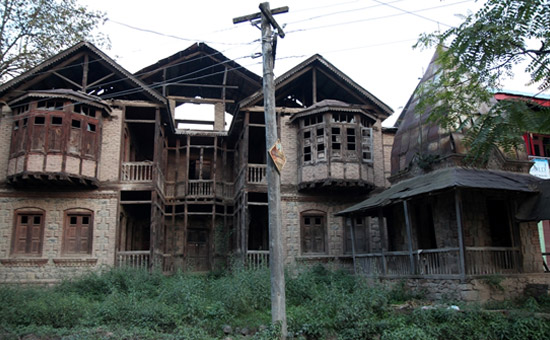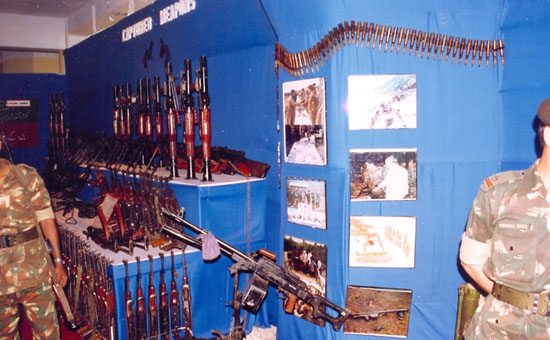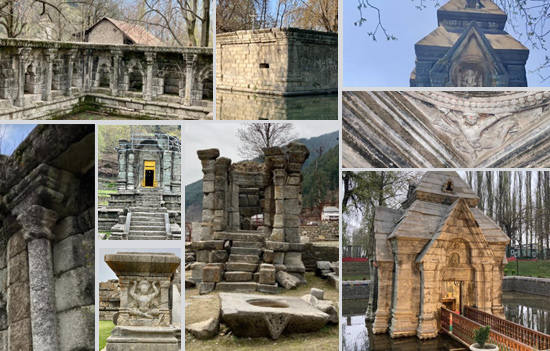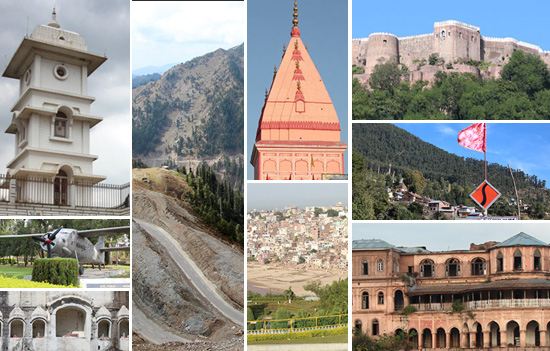- What was background to U.N. Resolution/Simla Agreement, their contents and Ambass G Parthasarathy’s views on the Simla agreement making the U.N. Resolution redundant. No plebiscite because Pakistan did not implement condition 1 of 1948 U.N. Resolution i.e. removing its troops from Jammu & Kashmir.
Ever
since 26 tourists were killed in Pahalgam and Operation Sindoor thereafter,
numerous experts refer to the 1948 United Nations Resolutions on Jammu and
Kashmir, as if blaming India for lack of its implementation, whilst missing the
Simla Agreement.
Indians must remember that Kashmir Valley is only 7 % of the area
of the state of Jammu and Kashmir that was acceded to India via the Instrument
of Accession signed by Maharaja Hari Singh in 1947, 54% is illegally occupied
by Pakistan and China. Source
This article covers background to the U.N. Resolution and Simla Agreement, their contents and Ambass G Parthasarathy’s views on the Agreement making the U.N. Resolution redundant.
Background to the UN Resolution in brief
Some
5,000 Pathan tribesmen invaded the State, on the night of 21/22 October 1947;
looting, killing and raping along the way. The Maharaja wanted the Indian Army
to drive out the invaders for which he needed to sign the Instrument of
Accession (IOA). This he did on 26/10/1947.
In the early hours of 27/10/1947 began an operation that had never
occurred in the history of warfare before. On 7th November Indian troops won
the Battle of Shalteng, thereby removing all
threats to Srinagar. Three days later, Baramulla was recaptured. The process of
retreat by the enemy on all fronts began.
On Mountbatten’s advice, Nehru
decided to lodge a complaint to the United Nations Security Council. That
was done on 1/1/1948. The cease-fire was announced on 1/1/1949.
On 5/1/1949 the U.N. Commission for India and Pakistan proposed a resolution whereby the future of J&K would be determined by a democratic method of a plebiscite conducted by India under the UN’s auspices but after Pakistan withdrew its troops from the State and disbanding of Azad Kashmir forces. The occupied areas were never recovered.
Votaries
of plebiscite quote Nehru's promise of a plebiscite made in his All India Radio broadcast in 1947.
However
according to former CJI M C Mahajan the IOA and the Indian
Independence Act 1947, passed by the British Parliament, gave no legal or constitutional authority to Nehru or Mountbatten, the then governor general, to make that promise. Former Chief Justice of India, A S Anand presented a series of arguments in his book to conclude, ‘This position brings one to the conclusion that to hold a plebiscite would be repugnant to the Constitution of India and J&K’. 1pg 85
 Burnt and Deserted Pandit Homes, Anantnag. 2014.
Burnt and Deserted Pandit Homes, Anantnag. 2014.
What does the U.N. Resolution no
47 passed on 21/4/1948 say?
Excerpts from resolution, “Having considered the complaint of the Government of India concerning the dispute over the State of Jammu and Kashmir, Noting with satisfaction that both India and Pakistan desire that the question of the accession of Jammu and Kashmir to India or Pakistan should be decided through the democratic method of a free and impartial plebiscite,
Recommends to the
Governments of India and Pakistan the following measures as those which in the
opinion of the Council are appropriate to bring about a cessation of the fighting
and to create proper conditions for a free and impartial plebiscite to decide
whether the State of Jammu and Kashmir is to accede to India or Pakistan:
The
Government of Pakistan should undertake to use its best endeavours: (a) To
secure the withdrawal from the State of Jammu and Kashmir of tribesmen and
Pakistani nationals not normally resident therein who have entered the State
for the purpose of fighting, and to prevent any intrusion into the State of
such elements and any furnishing of material aid to those fighting in the
State;
2.
The Government of India should: (a) When it is established to the satisfaction of the Commission set up in accordance with the Council's resolution 39 (1948) that the tribesmen are withdrawing and that arrangements for the cessation of the fighting have become effective, put into operation in consultation with the Commission a plan for withdrawing their own forces from Jammu and Kashmir and reducing them progressively to the minimum strength required for the support of the civil power in the maintenance of law and order;”
To
read full resolution Online on U.N. site and
for PDF click on PDF
Simply put, the resolutions ask Pakistan was to withdraw its troops from Jammu and Kashmir i.e. (Mirpur, Muzzafarabad, Gilgit and Baltistan (POJK). Since Pakistan has not withdrawn its troops, a plebiscite could not be held.
Further
Retd Deputy Army Chief Lt Gen N S Malik wrote in Indian Defence Review, ‘Similarly the so called “Two Nation Theory”, under whose umbrella Pakistan was formed, applied only to British ruled India and not the princely states, and hence a state being Muslim majority did not disqualify it from joining Indian Union. (Note that Kapurthala in Punjab was a Muslim Majority State). In the same context, referendum in J&K is illegal as it was not agreed by Muslim League to hold referendum in princely states but left to their rulers to accede to India or Pakistan, contiguity being a criteria for the same.’ Source
The U.N. Resolution of 1948 does not question the legality of the accession of Jammu and Kashmir to India.
Read All you wanted to
know about Jammu and Kashmir Accession to India
 Arms seized from Kashmiri Militants displayed by the Indian Army at Shivaji Park, Mumbai. 1998.
Arms seized from Kashmiri Militants displayed by the Indian Army at Shivaji Park, Mumbai. 1998.
Background to Simla Agreement
The
Agreement was signed on July 2, 1972 by Z A Bhutto as President of the Islamic Republic of Pakistan and Smt Indira Gandhi, as Prime Minister of the Republic of India.
Note that Bhutto signed the agreement as President of a truncated Pakistan because East Pakistan became an independent country namely Bangladesh on 17/12/1971. Read Independence of
Bdesh 1971
What does the Simla Agreement say?
Excerpts from the Simla Agreement, “The Government of India and the Government of Pakistan are resolved that the two countries put an end to the conflict and confrontation that have hitherto marred their relations and work for the promotion of a friendly and harmonious relationship and the establishment of durable peace in the sub-continent.
Para
1 (2) - That the two
countries are resolved to settle their differences by peaceful means through
bilateral negotiations or by any other
peaceful means mutually agreed upon between them.
Para
4 (ii) - In Jammu and Kashmir, the line of control resulting from the
cease-fire of December 17, 1971 shall be respected by both sides without
prejudice to the recognized position of either side. Neither side shall seek to alter it
unilaterally, irrespective of mutual differences and legal interpretations. Both sides further undertake to refrain from the threat or the use of force in violation of this Line.”
Simply put, “The agreement “was a comprehensive blueprint for good neighbourly relations between India and Pakistan”, with both countries undertaking “to abjure conflict and confrontation which had marred relations in the past, and to work towards the establishment of durable peace, friendship and cooperation”. Indian Express
To read Agreement in PDF click on PDF.
By stating that
one, differences would be settled through bilateral negotiations it removes the
scope for any third party intervention and two, the line of control would not
be unilaterally changed through the use of force.
 Temples of Kashmir. Pic by Namrata Wakhloo.
Temples of Kashmir. Pic by Namrata Wakhloo.
India's former high commissioner to Pakistan (1998 to 2000) G Parthasarathy wrote:
In 2015 in Rediff.com, “After failing to achieve his objective of
seizing control of Jammu and Kashmir militarily, President Ayub Khan sought to
urge the UN to arrange a plebiscite in the state. He forgot that Pakistan
itself had rendered the key 1948 UN Security Council Resolution redundant and
un-implementable, by refusing to withdraw its army from the state, as required
by the UN Resolution.
The Simla Agreement signed in 1972 after
the Bangladesh conflict, by then prime ministers Indira Gandhi and Zulfiqar Ali
Bhutto, stated that the issue of J&K would be settled by bilaterally
between India and Pakistan, discarding recourse to earlier UN Resolutions.
Despite the provisions of the Simla Agreement, Pakistan chose to enact a diplomatic soap opera in annual sessions of the UN General Assembly by demanding UN action to resolve the Kashmir issue. India routinely responded by pointing out that the issue had to be settled bilaterally.” Source
On
Suspension of the Simla Agreement Mr Parthasarathy told the MINT in 2025, “How can a country suspend a bilateral agreement signed years ago between two countries,” questioned G Parthasarathy, former Indian envoy to Pakistan. Of course, Islamabad is well within its rights to disregard a formal treaty, Parthasarathy told this reporter.
In his view, there is a clause in the Shimla Agreement which agrees to settle all disputes between India and Pakistan by bilateral discussions. “Once that agreement was inked, one thing became very clear. The border cannot be changed,” Parthasarathy, who served as the High Commissioner of India to Pakistan between 1999 and 2000 in the crucial Kargil War years, said.” Source
Read Pakistan
says it has put Simla Treaty in abeyance
Have you ever heard Pakistan referring to the Simla Agreement earlier and
importantly following it?
Has Pakistan fulfilled the promises it made
after being defeated in the war of 1971?
 There is more to Jammu and Kashmir than Kashmir. Jammu region collage.
There is more to Jammu and Kashmir than Kashmir. Jammu region collage.
The world, Indians included, must realize that as long as Pakistan exists it shall be anti-India. The day hatred for India stops, the Pakistani people will not know what to do with their energy – might feel the need to decipher their true identity.
References
1.
The Constitution of Jammu and Kashmir, Its Development and Comments. Third
Edition 1998 by Justice A S Anand
Also read
1.
How India can
build Comprehensive National Power
2.
All you wanted to
know about Jammu and Kashmir Accession to India
3.
List of Terrorist
Attacks in India
4.
Takeaways from
Operation Sindoor
5.
Decoding
Suspension of Indus Water Treaty
6.
How many Indians
died in the Kashmiri Terrorist Movement
7. How many Indians died in the Khalistan Movement
8.
Did Muslims
actually rule India for 800 years
9. Did Godhra save
Pakistan
10.
Why Akhand Bharat
is a BAD Idea
11.
Why has Democracy
Failed in Pakistan
12. What stops me from
loving Pakistan
13. Why is Baluchistan
important for China